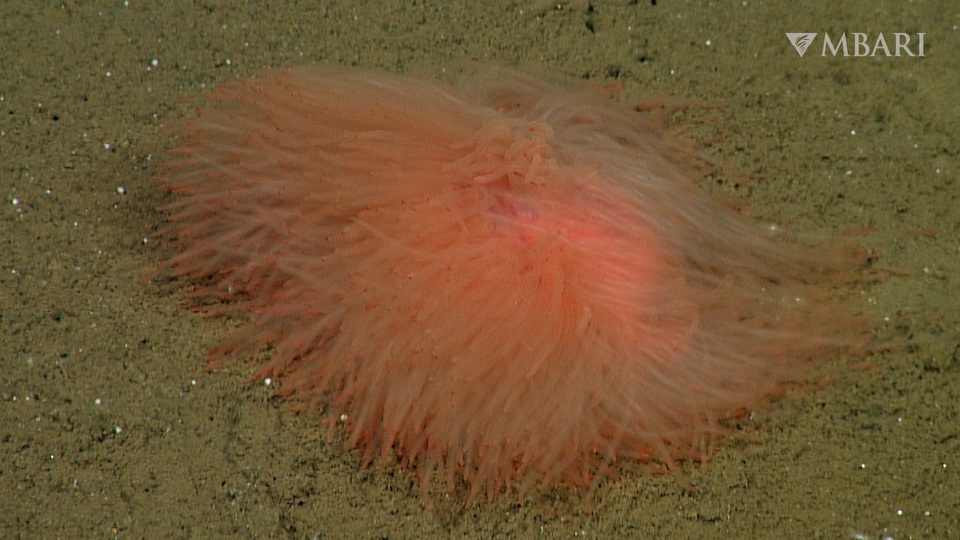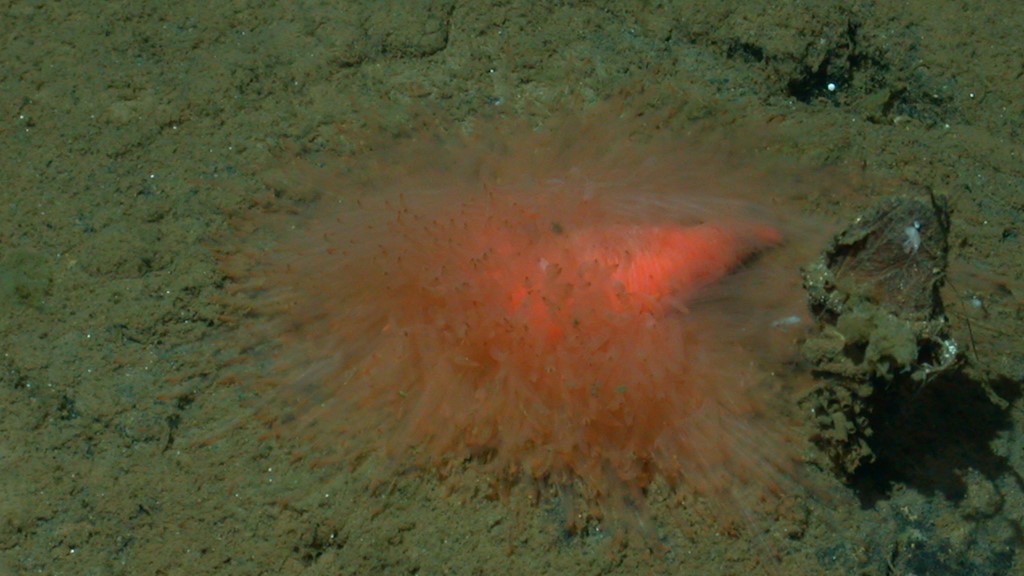Weird deep-sea worm looks like a luminous lump of spaghetti
The bizarre pom-pom creature is yet to be officially named.
A bizarre seafloor creature covered with luminous orange, spaghetti-like tentacles recently made its internet debut in newly released video footage. The unusual pom-pom-shaped creature is actually a type of segmented marine worm known as a polychaete, and it belongs to an appropriately named group: spaghetti worms.
Researchers from the Monterey Bay Aquarium Research Institute (MBARI) captured footage of the pasta-mimicking worm in 2012 using a remotely operated vehicle (ROV), while they were exploring the Gulf of California off the coast of Mexico. They released the video July 1 on MBARI's YouTube channel to celebrate World Polychaete Day.
This particular species of spaghetti worm has yet to be officially named, but it belongs to the genus Biremis. It has no eyes or gills and uses its colorful tentacles to catch the tiny pieces of organic detritus, also known as marine snow, that it feeds on, according to an MBARI statement.
Most spaghetti worms live in burrows or tunnels below the seafloor and only poke their noodle-like tentacles into the water to snatch up bits of food. But this Biremis worm spends its life above ground and has previously been observed swimming through the water or crawling along the seafloor to find locations where food is plentiful, according to MBARI.
Related: Deep-sea squid mom carries dazzling pearl-like string of egg
Another group of MBARI researchers first discovered the unnamed spaghetti worm species in 2003 after spotting it in the Gulf of California using a different ROV. But nearly two decades after that initial sighting, scientists are still working toward naming the species.
"Although giving a species its own name would seem to be a simple process, it actually takes a lot of time and dedication to collect specimens, examine key features, sequence the DNA and assign a scientific name," MBARI representatives said in the statement.
Get the world’s most fascinating discoveries delivered straight to your inbox.
It is unclear exactly how deep this worm can reside, but a majority of sightings have occurred below 6,560 feet (2,000 meters) beneath the surface, according to MBARI.
This spaghetti worm highlights how little scientists know about deep-sea species and the roles these animals play in their ecosystems. Continued exploration of the deep ocean and the creatures that live there is vitally important, especially as many deep-sea ecosystems are being degraded by destructive practices like deep-sea mining or trawling, according to MBARI.
"No doubt many more wonderful worms like Biremis await discovery in the ocean’s mysterious depths," MBARI representatives said.
Originally published on Live Science.

Harry is a U.K.-based senior staff writer at Live Science. He studied marine biology at the University of Exeter before training to become a journalist. He covers a wide range of topics including space exploration, planetary science, space weather, climate change, animal behavior and paleontology. His recent work on the solar maximum won "best space submission" at the 2024 Aerospace Media Awards and was shortlisted in the "top scoop" category at the NCTJ Awards for Excellence in 2023. He also writes Live Science's weekly Earth from space series.




